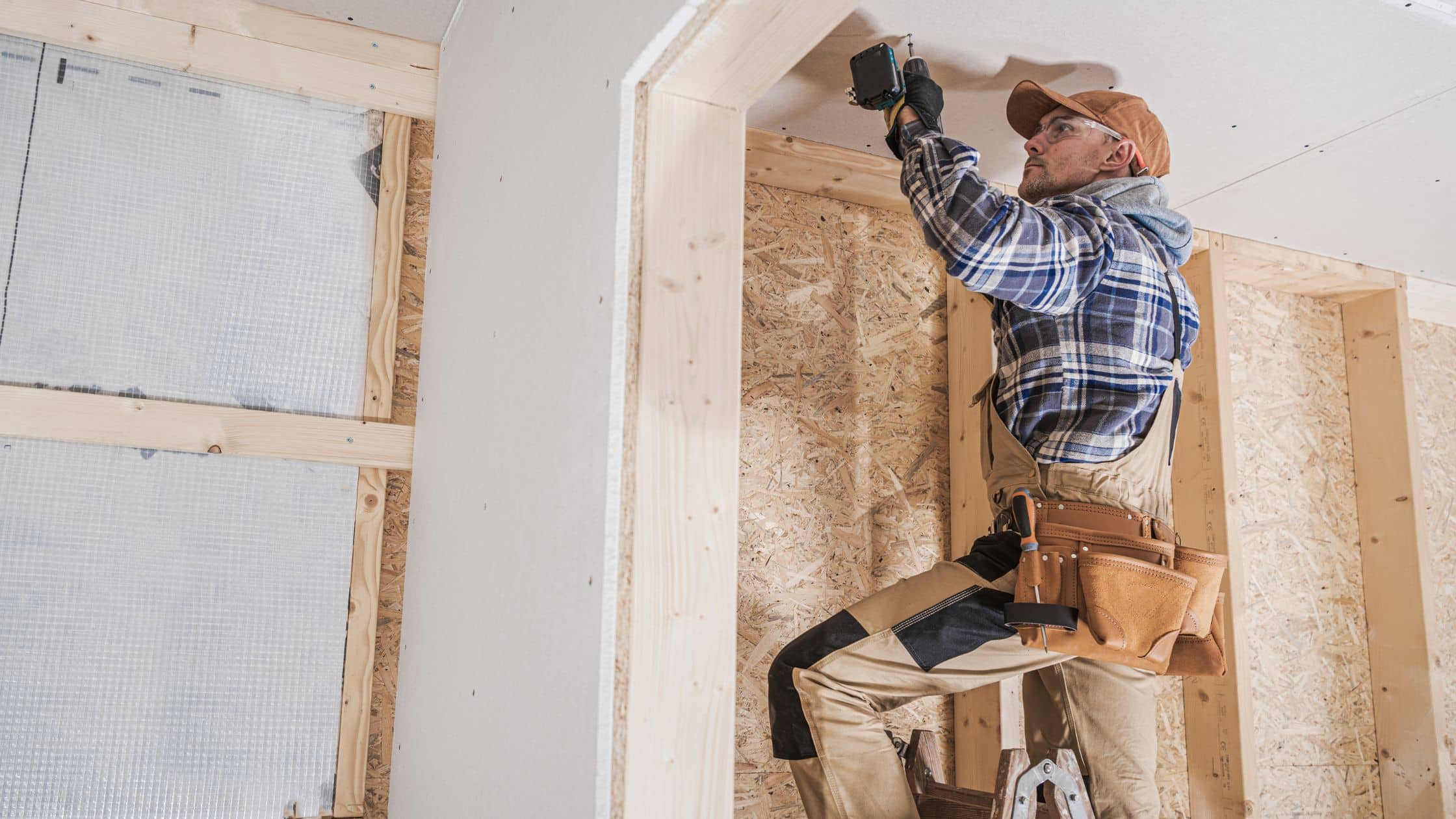
Can You Use Joint Compound on Painted Drywall?
Yes — you can apply joint compound over painted drywall, but proper prep is key. Lightly sand the painted surface to remove sheen, clean off dust, and apply the compound in thin layers. Once dry, sand smooth, prime, and repaint for a seamless finish.
🏠 Joint Compound on Painted Drywall: Q&A Guide
🔹 Basics
Q: Can joint compound stick to painted walls?
Yes, but it bonds best if the surface is slightly roughened by sanding or scuffing first.
Q: What’s the difference between spackle and joint compound?
-
Spackle: Best for small nail holes or minor dings. Dries quickly.
-
Joint compound (“mud”): Better for larger holes, cracks, or seams. More flexible and sands smoother.
Q: Do I need to remove old paint before patching?
No. You only need to scuff-sand glossy paint so the joint compound adheres properly.
🔹 Prep Work
Q: How do I prep painted drywall for joint compound?
-
Clean the area with mild soap and water (remove dust, grease).
-
Lightly sand glossy paint with 120–150 grit sandpaper.
-
Wipe off sanding dust with a damp cloth.
Q: What if the paint is peeling?
Scrape away loose paint until only solidly bonded areas remain, then feather edges with sandpaper.
Q: Do I need primer before applying joint compound?
Not usually, unless the paint is very glossy. In that case, a quick coat of bonding primer can help adhesion.
🔹 Application
Q: How do I apply joint compound on painted drywall?
-
Use a putty knife or taping knife.
-
Apply compound in thin, even layers.
-
Feather edges beyond the hole/crack for a smooth blend.
Q: How many coats should I apply?
Usually 2–3 thin coats. Let each coat dry fully before sanding and applying the next.
Q: Can I use mesh tape or paper tape over cracks?
Yes — for cracks or seams, embed tape in the first coat of joint compound to prevent future splitting.
🔹 Drying & Sanding
Q: How long does joint compound take to dry?
-
Standard mud: 12–24 hours per coat.
-
Quick-set (“hot mud”): 5–90 minutes depending on formula.
Q: How do I sand joint compound?
Use 220-grit sandpaper or a sanding sponge. Sand lightly until smooth and flush with the wall. Avoid over-sanding which can gouge the patch.
Q: How do I know when it’s ready to sand?
When it turns solid white and feels dry/hard to the touch.
🔹 Priming & Painting
Q: Do I need to prime after joint compound?
Yes. Always prime patched areas before painting to:
-
Seal the porous compound
-
Prevent “flashing” (dull patches where paint absorbs differently)
Q: Can I just paint over joint compound?
No. Paint alone won’t seal the patch — the finish will look uneven.
Q: What kind of primer should I use?
A standard latex drywall primer or stain-blocking primer for stained areas.
🔹 Advanced Fixes & Troubleshooting
Q: How do I fix a large hole in painted drywall?
-
Cut out a square around the hole.
-
Insert a drywall patch piece or mesh patch.
-
Apply joint compound over seams with tape.
-
Sand, prime, and paint.
Q: How do I repair hairline cracks in painted drywall?
-
Widen crack slightly with a utility knife.
-
Embed paper/mesh tape in joint compound.
-
Apply 2–3 coats of mud, sand, and prime.
Q: What if the patch still shows after painting?
-
Check if you skipped primer.
-
Feather sanding edges further.
-
Apply a second coat of paint across the full wall for uniform sheen.
Q: Can I texture over patched drywall?
Yes. Once smooth, apply texture spray or use a brush/roller to match existing wall texture before painting.




No Comments
Sorry, the comment form is closed at this time.